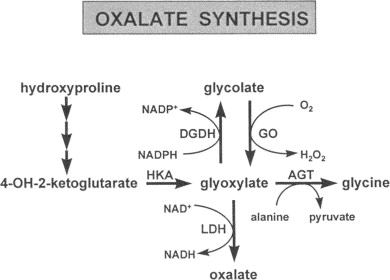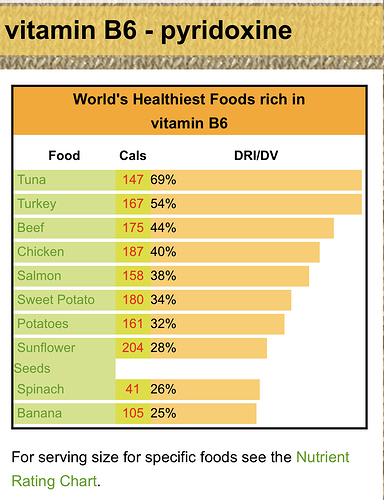All roads lead to a leaky gut?
Oxalates and possible reason some people get sick on carnivore
I think the main oxalic acid issue is about preparation: avoiding raw greens is good unless you dress them in alkalinizers like lemon and ACV. For cooked greens, most of the oxalic acid gets leached out - you just drain the liquid from steamed/boiled/fried greens.
So, imho the reason some ppl get sick on all-meat is more the overarching acidifying nature of it, particularly with cooked all-meat, in a diet lacking alkalinizers like citrus, vinegars, pickled veg, etc.
Oxalic acid is also easily reduced by removing the stems of veg, then steaming, boiling, or saute wilting the leaves of any of these vegetables for 5 mins. Gently squeeze out any remaining water from the vegetables.
What this means for pot liquor is confusing - as it’s also high in other good nutrients and meant that, say, traditional U.S. soul food with long simmered greens with animal fat made the difference in health for communities.
Remaining Qs:
I wonder if animal fat plays a role in binding oxalic acid?
Is the issue w/ almonds that they need to be blanched and/or soaked and rinsed, which is what also addresses phytic acid?
Possibly. Sensitivity to lemon seems to run In my family along with autoimmune issues. I know leaky gut leads to autoimmune problems.
”…But in cases where adrenal fatigue has become a problem, leaky gut due to metabolic issues can lead to salicylate sensitivity quickly. Leaky gut occurs when the small intestine is too damaged to properly protect the gut, allowing food particles, bacteria, and toxins to enter the bloodstream. …” …More
Also citrus or lemon sensitivity is a histamine intolerance and intestinal Diamine oxidase (DAO) deficiency?
Reference:
[1] “…DAO is found in very high concentrations in certain places? Namely, the small intestine, the first part of the large intestine, and the kidneys. Its job is to break down the histamine that we eat. If it cannot break it down because the enzyme doesn’t work, or if we do not have enough DAO on board, histamine is not broken down and begins to accumulate. Then, we can experience symptoms from excessive histamine and in some people, histamine intolerance. …” …More
[2] There are three main genes which are central to processing histamine:
- HNMT – which requires SAMe as a cofactor (and this requires an effective MTHFR enzyme to help produce SAMe)
- DAO – which requires vitamin B6 and copper
- MAO – which requires vitamin B2 and iron
- NAT2 – which requires CoA which stems from vitamin B5
If any one of these genes are slowed or burdened, then the removal of histamine is slowed – and symptoms of histamine intolerance occur. …More
Yes, that is true. I do seem to have some mild trouble with histamines. I figured this out about a year ago. I seemed to have reactions to more and more foods the longer I was eating keto. The biggy was heart palpitations. Low histamine diet helped but wasn’t the complete answer.
It turns out I was very deficient in magnesium. Once I got my magnesium levels back up, the reactions to food improved.
I ate a lot of oxalate containing food when I discovered keto. I believe the oxalates are what caused the magnesium deficiency which caused the palpitations. The interesting thing is many of the fruits and veggies that contain oxalate also tend to be high in histamine. It all seems to be intertwined.
This is a really good approach also:
image link”…Glycine is very unlikely to generate oxalates, but collagen may, especially if you are deficient in vitamin B6?..” - Chris Masterjohn
References:
[1] GLYOXYLATE SYNTHESIS, AND ITS MODULATION AND INFLUENCE ON OXALATE SYNTHESIS

[2] “…Hydroxyproline is a major component of fibrillar collagen of all types, comprising ~14% of the total amino and imino acid content. It is produced by the post-translational modification of proline by the enzyme 4-prolyl hydroxylase. In plasma, hydroxyproline exists in protein-bound, peptide-bound and free forms. …” …More
Lemon water is not hard to drink. It is a suggested prophylactic to limit calcium oxalate kidney stone formation. That kidney stone formation is a downstream potential. But lemon water is not a cure, not even symptomatic, for the other symptoms of oxalate dumping. Those occur further upstream in the problem.
Oxalate problem not fully solved. Thanks for trying.
Are you suggesting adding an acid to a mythical acid body environment?* Doesn’t acid urine provide the environment for calcium oxalate stone formation? (It does).
*It’s OK @atomicspacebunny Bunny, just ribbing you. I understand that citric and acetic acids are very mild acids that do not add to metabolic acidosis, and might even prompt a chain of biochemistry to enhance internal pH buffers.
The current way to limit oxalate dumping symptoms appears to be a weaning method, to gradually remove oxalate containing foods from the diet over time. Going carnivore definitely does not do that as it is a no oxalate diet started suddenly and that initiates the oxalate dumping for some people.
There may be some chelation protocols for interested experimenters that could be seen as overdosing micronutrients (metal ions) to the more cautious.
But where I reckon i could get the best feedback from you, dear Bunny, is if you have any info on whether sequestered oxalates are actually dangerous to health? Sally K Norton certainly suggests we are better rid of them, but that may not be a practical process, if it requires injury to do so.
Sometimes not most. There is a range suggested by this study. It’s informative that water soluble oxalate is the more troublesome oxalate form that could be absorbed.
I wonder if cooking in cream may be even more effective? With the available dairy calcium binding up any molecules retained? But to be safe the cream liquid would need to be discarded?
Why do we want spinach anyway. The iron is bound by the phytic acid and is not bioavailable. What other nutritional benefits are there in this leafy green?
Spinach is tasty and green, and alkalinizing due to minerals. I love it wilted with eggs or meats, French style.
Yes, eating it with dairy does bind oxalic acid due to calcium. You can cook with dairy or just eat it on the same plate with cottage cheese, raw cheese, etc from what I understand.
(Recently I learned that because of rampant calcium deficiencies in the SAD body, supplementing with highly assimable, quality coral calcium is really impt for Vit. D synthesis and other things. I don’t know how long it takes a modern person in industrial society to repair their bodies’ calcium levels with LCHF/keto… that might be discussed in Cate Shanahan’s Deep Nutrition book)
Senior chemist and researcher Robert Barefoot recommends the non-fossilized, broken coral recently harvested - from top quality producers as there are lots of adulteration issues with talc as a replacement etc.
This is the type I’ve taken in the past, a bottle lasts for years at the rate I take it!
They also now make it in capsules too I see.
Cate Shanahan agrees that one must enjoy their vegetables to eat them. She advocates slathering them in butter. 
This alkalinity claim needs more backing, I think. @atomicspacebunny Bunny has been looking at the other end of it with the alleged acidifying of the carnivore diet.
Many vegetables themselves when tested for pH are alkaline. But that does not transfer directly to human body alkalinity especially in the circulatory or body tissue compartments. Fair enough that muscles can generate their own lactic acid with exercise but that is buffered rapidly if it gets into circulation.
Foods don’t seem to make any difference to the blood and body tissue pH. In fundamental physiology the pH is so tightly controlled.
Urine pH varies as a downstream response to the buffering system. But urine could be argued as external to the body. It’s just contained in a bag ready for excretion.
So, I need these ‘body acidifiers and alkalinisers’ more clearly explained to me. It’s very interesting because the acidity and alkalinity extension is rapidly applied to cancer. Does that stem from cell culture studies?
Anna Cabeca MD’s Keto Green approach (in her book The Hormone Fix) is all about de-acidifying the GI tract to aid in cortisol reduction and mineralizaiton - particularly for females - and Louise Gittleman PhD in Radical Metabolism also advocates same. I notice a distinct benefit from a plate 2/3 with cooked veg.
Daily lemon water/ACV routines also work to alkalinize, esp when taken 2-3x day.
Urine pH strips may in fact be more entertaining than ketostix.
Ahhhh. Bingo! It’s a anatomical geography detail.
Yep, yep, yep, I can understand that. The GI tract is outside the body and the pH is manipulable. So the cancer thing might be also pertaining to GI cancers. And maybe Bunny has been trying to teach me about pH in the intestines? @atomicspacebunny.
Thanks Mary. I am a dum dum.
You’re welcome. I’m always learning as I go forth in LCHF/keto biology & physiology. Being that we are 65% water, the full range of minerals well absorbed can have quite a positive impact.
rip the darn bandaid off fast. then find that underneath the wound needs time to heal in the light and air, which is great nutrition, protein and fat heals 
always remember people are not sick ‘on carnivore’, they are sick from detoxing and what the body requires to heal from the other crap food in their lives, paired with medical situations and more factors obviously…so…just a reminder of it all that when we do a full elimination menu like carnivore, you find out truly when you add back in foods what they do to your personal body.
Yeah, that doesn’t work for everyone. Oxalate dumping can be quite severe and even life threatening for some.
agreed definitely. I am just saying that many can do it but won’t ever go there. Can’t handle ANY type of change when it comes to ‘adaption’ one must endure thru menu change.
but I agree with you on that…it isn’t quite one size fits all but there are some exceptions where it truly won’t fit.
I ripped that bandaid off 3 times to test the repeatability of symptoms. One time I ended up in hospital. The other two times I was about to drive in. But things corrected with at home treatments. 7 to 10 days in to strict carnivore brings me undone with oxalate dumping symptoms. Dirty carnivore is a bit more sustainable and weaning off plants slowly.
The low oxalate approach trumps total carnivore (n=1) at the moment. But I’m finding my way there through the challenges and am currently more carnivore, very carnivore adjacent, than on my first go. So I’m getting there to see what it’s like.
I get what you say @Fangs. That “all in” approach worked well for starting Keto, and may well work for a high percentage of people having a go at carnivore.

